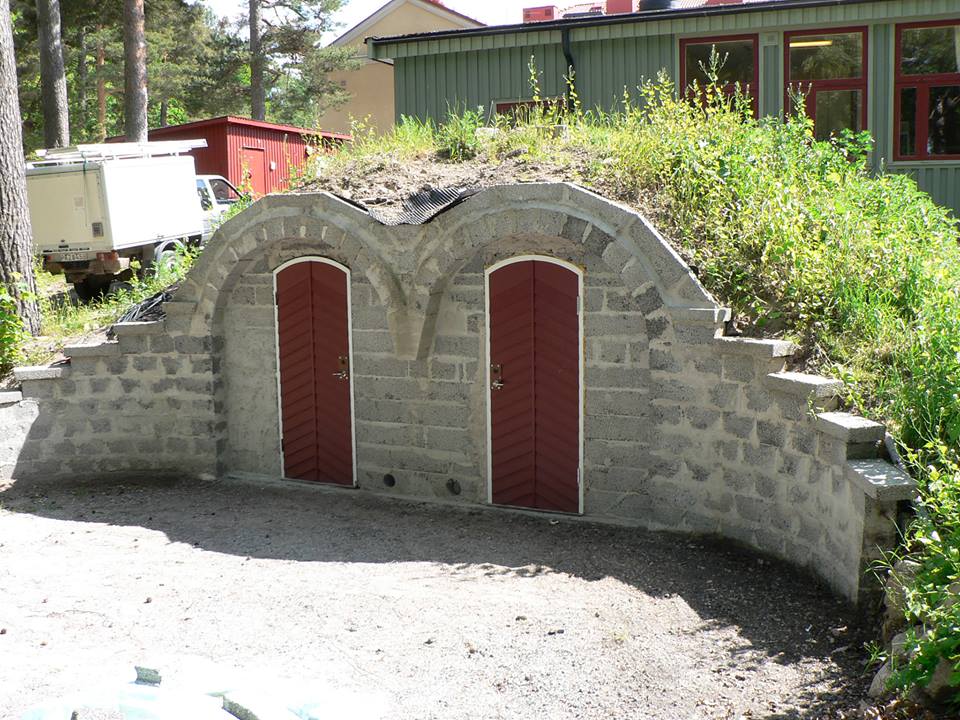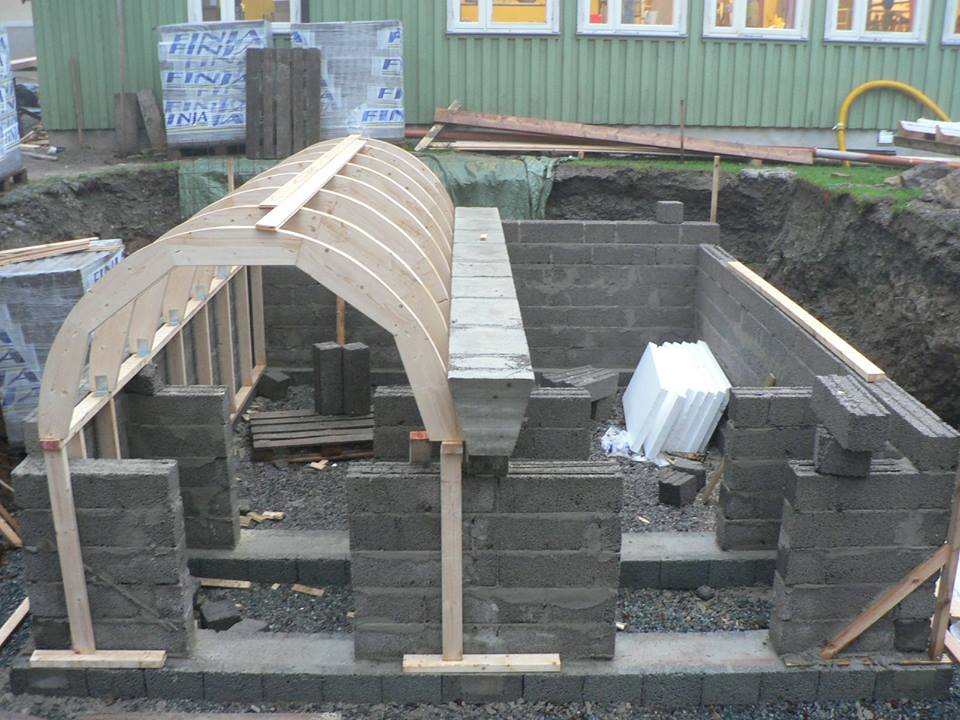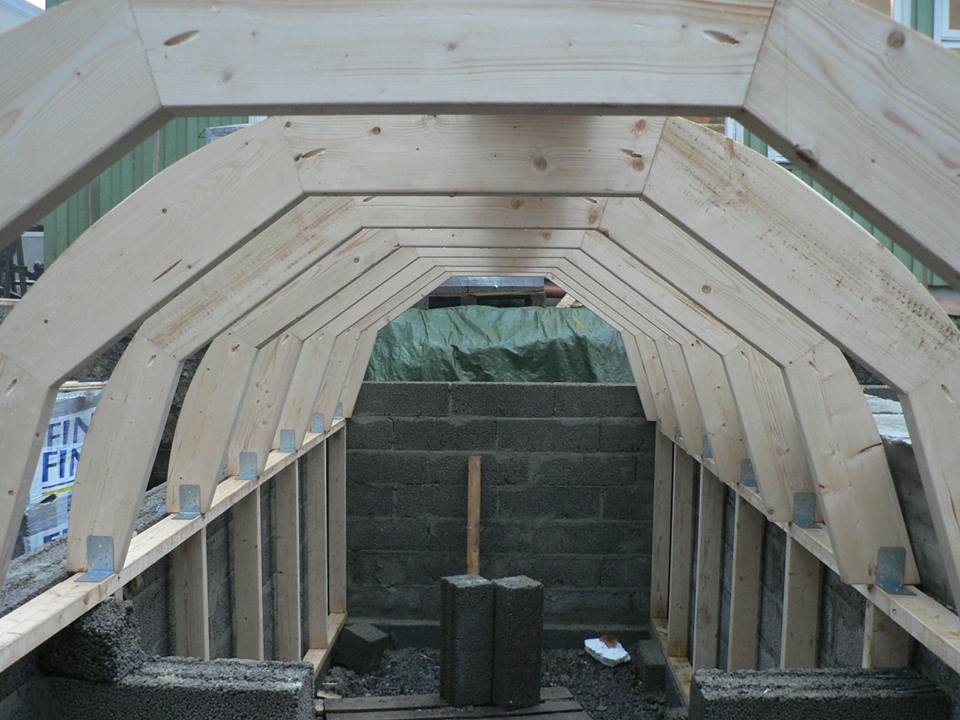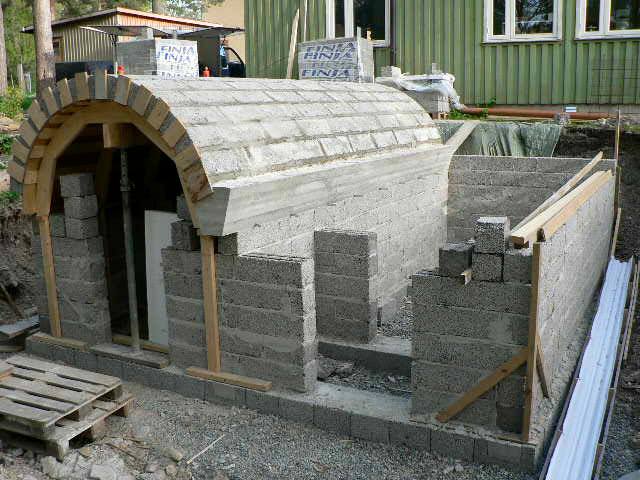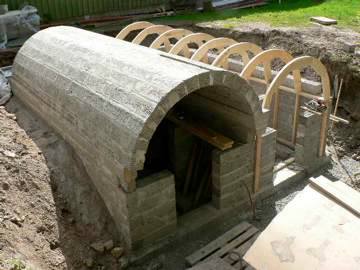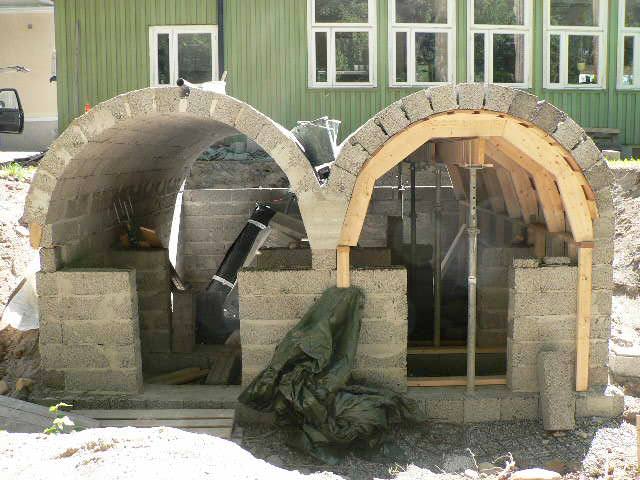William Herrold designed and built this attractive and highly functional root cellar in Sweden and was kind enough to let us share it with you. The text below and pictures were provided by William. Scroll to the bottom for build photos. We thought you'd enjoy hearing about a cellar from outside our root-vegetable-loving province. There's lots of inspiration here for folks interested in Farm to Cafeteria school food programs too. If you have specific questions about the cellar contact William at pastorprime@hotmail.com.
The story of the cellar:
- Located at a Waldorf School in Örebro, Sweden
- The left cellar room is for roots and the right room used for fruits and fermentation.
- The school serves 85% organic food and the kitchen staff cooks 100% from scratch.
- This cellar is designed to suit the Nordic climate and saves the school considerable electricity
- It has allowed the school to transition from receiving multiple food deliveries a day to one delivery a week
- This was a commercial project, the kitchen goes through 150+ kilos of vegetables alone every week as 95% of the food served at the school is vegetarian and therefore a lot of fresh produce is required.
Design & build
- 70 cubic meter excavation.
- 12 cubic meters of mixed, compacted sand/gravel/stone as a bed/foundation.
- 960 19 x 19 x 59 cm "Leca" blocks used, not including the foundation layer.
- Over 1/2 kilometer of 8 & 12 mm re-bar used.
- 12 cubic meters of sand used as insulation to the walls and a blend of sand and 3 cubic meters of loose 6- 20 mm "Leca" in the arch.
- "V" shaped beam joining the arches was poured in-situ with lightweight reinforced concrete.
- Only the arches are covered with a solid water barrier, all vertical surfaces are breathable (a must)
- Traditional arch design facilitates far better air circulation vs. flat roof= mold in the corners.
- I read 2 great books in the design phase, but they're in Swedish...
I've never seen or even heard of a double arch root cellar although they probably exist somewhere up here in the higher latitudes. Considering the problems of storing, for example apples and onions in the same space for any length of time, the double arch made sense, and heck, I love a design challenge, and the thought of building something with the theoretical life span of a Giza Pyramid thrilled me.
I'm not a stonemason, but I've been a carpenter/ furniture builder for 24 years and have done my share of concrete work for foundations. This was the first time I'd built with bricks or blocks. My success here was probably based on being obsessed with Legos when I was a child and having a great drafting teacher when I was in high school.


